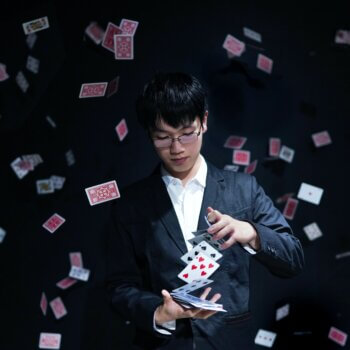Key Takeaways:
George Lucas’s space saga about a fledgling rebellion of Jedi knights fighting the evil Galactic Empire hit cinemas in 1977. But what many miss are the influences of eastern religions and philosophy such as Buddhism and Taoism, an ancient Chinese religion and philosophy focused on acting in harmony with the universe. Some see an influence here from traditional Chinese belief in “chi”, the vital life force or energy present in all living beings. The force reveals the interconnectedness of the Star Wars universe, and there are Buddhist principles that evoke this idea.
When George Lucas’s space saga about a fledgling rebellion of Jedi knights fighting the evil Galactic Empire hit cinemas in 1977, few could imagine that it would become one of the most successful film franchises in history.
There were many influences on the mythology and lore director Lucas created for the Star Wars universe. Some cite Joseph Campbell’s study of mythological archetypes, The Hero With a Thousand Faces, while others point to the films of acclaimed Japanese director Akira Kurosawa.
But what many miss are the influences of eastern religions and philosophy such as Buddhism and Taoism, an ancient Chinese religion and philosophy focused on acting in harmony with the universe.
As a philosopher, Buddhist and huge Star Wars fan, I cannot fail to see these strong eastern influences, particularly in the idea of “the force”, and on the Jedi view of attachment.
The force
In the original Star Wars film, Jedi master Obi-Wan Kenobidescribes the force to young Luke Skywalker as “an energy field created by all living things. It surrounds us and penetrates us, it binds the galaxy together.” Some see an influence here from the traditional Chinese belief in “chi”, the vital life force or energy present in all living beings.
Other possible Chinese influences include the concept of Tao, meaning “the path” or “the way”. A Jedi would most likely think of the force in very similar terms. The Oxford Dictionary of Philosophy defines Tao as “the source and principle of the cosmic order”.
Te Ching, the main text of Taoism, proclaims the following:
The Tao is infinite, eternal. Why is it eternal? It was never born thus it can never die. Why is it infinite? It has no desires for itself. Thus it is present in all beings.
The force reveals the interconnectedness of the Star Wars universe, and there are Buddhist principles that evoke this idea, such as sunyata, meaning “emptiness” formulated by the Indian Buddhist philosopher Nagarjuna. He held that everything is “empty” (sunya) of self-existence, meaning that nothing exists independently of everything else because everything is connected. In different ways, both these ideas are possible influences on the force.
Attachment
The Jedi order teaches its members not to become attached to people or things because it will eventually lead to the dark side. This is the reason the Jedi are not allowed to pursue romantic relationships or marriage, and why the characters Anakin Skywalker and Padmé Amidala, from Attack of the Clonesonwards, have to keep their relationship a secret.
This aversion to attachment is expressed throughout the prequels which were made after the original Star Wars trilogy. In The Phantom Menace, the Jedi are reluctant to train the child Anakin because he is afraid, which he says comes from missing his mother. Yoda, the oldest and wisest Jedi master, says: “Fear leads to anger, anger leads to hate, hate leads to suffering.”
In Attack of the Clones, Padmé asks Anakin if Jedi are allowed to love, to which he replies: “Attachment is forbidden. Possession is forbidden.” Finally in Revenge of the Sith, Anakin seeks Yoda’s advice after having nightmares about Padmé dying. Yoda tells him: “Death is a natural part of life … attachment leads to jealousy, the shadow of greed, that is. Train yourself to let go of everything you fear to lose.”
This is a very Buddhist way of looking at things. Buddhism teaches that suffering or dissatisfaction, expressed by the Paliword dukkha, is inherent to the human condition. The reason for this suffering is tanha, meaning “thirst” in Pali, but better translated as attachment or craving.
Humans crave for things to be different to how they are, which causes suffering when they are not how we want them to be. The roots of tanha are the “three poisons” of hatred, greed and ignorance (or delusion). These poisons are similar to Yoda’s fear, anger and hatred and all three, as he says, “lead to suffering” – another clear Buddhist influence.
Anakin is unable to overcome his tanha. Naturally, he struggles to accept his mother’s death. However, he also gives in to his attachment (love) for Padmé, Having premonitions of her death, he yearns to save her, rather than accepting that death is inevitable for us all.
This yearning allows him to be manipulated by Emperor Palpatine, who promises him that he can learn how to save his wife. In the end, Padmé dies from a broken heart having watched Anakin become the evil Darth Vader, leaving him to suffer for his mistakes.
Some claim that it was the Jedi’s strict philosophical doctrines that caused Anakin’s surrender to the dark side. From a Buddhist perspective, however, the Jedi were correct.
Anakin needed to come to terms with the impermanence of life, another primary concept in Buddhism called anicca, and understand that it was his desperation (tanha) for unattainable immortality for his loved ones that caused his downfall. His transformation into Darth Vader proved both Yoda and the Buddha correct, and underlines the Buddhist influence on the Jedi view of attachment.
There are many influences on Star Wars from various different traditions, beliefs and mythologies. But the clear presence of concepts from eastern religious and philosophical beliefs in particular demonstrates the impact that philosophy can have on popular culture.
Creations like Star Wars can serve as a useful and affecting medium to help make philosophy more accessible beyond an intellectual or academic sphere, engaging viewers in something bigger and more enduring than the mere plot of a Hollywood film.





























